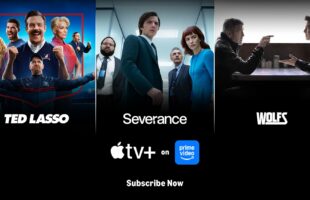Q: Where is Brightcove today and how has it been entering the TV space?
A: Brightcove is best known for our Video Cloud online video platform, but we’re much more than that. Brightcove provides cloud content services that help organisations of all kinds to publish and distribute professional digital media. We actually do two things:
1. Deliver the world’s professional digital media; so we enable organisations like Discovery Networks, Time, Sony Pictures and PUMA to publish and distribute online video experiences on their websites and to viewers on mobile devices and connected TVs. We work with more than 6,000 brands and media companies around the world.
2. And this is more recent; last August we acquired Zencoder, based out of California, and they do in-cloud encoding and transcoding for both video and audio. A lot of news organisations might have breaking news, sports or political content; things that need to get out very quickly – we help those companies transcode the video and audio files, and get them distributed across their video players.
Q: Which Brightcove services are popular in Asia?
A: Well definitely Video Cloud is our legacy product. We launched in Asia Pacific in Japan about four years ago, and then the rest of Asia for what will be three years in May. Outside of Japan we focus on Korea, Australia and New Zealand, Southeast Asia, Hong Kong, and India.
A good use case is ABS-CBN down in Manila, a big user of Brightcove Video Cloud. They have three platforms:
• One is a user upload site, which is actually more of a talent-scouting tool. The professors in universities have the students who are in communication arts and performing arts do projects, and they require a part of it to be video. When the videos are uploaded, the school gets the benefit of the video platform, while ABS-CBN gets first visibility into who can dance, who can sing, who can do lighting, who can write good scripts, and so forth.
• Two – they also use us for cable subscribers. Sky Cable offers a free service for cable subscribers. So if you miss a show yesterday or last weekend, you can watch it on your iPad later, or you can watch it on a connected TV or your PC.
• We also do the news platform as well, which is huge.
Q: So a lot of the services would then target consumers directly? We’re not using the Video Cloud for transmission purposes yet?
A: It’s mostly to consumers but we do B2B as well. A good example would be JF Asset Management in Hong Kong and Taiwan, which is part of the JP Morgan family. They have these experts in commodities, derivatives, foreign exchange – all these ladies that you see on TV on Squawk Box (CNBC) and on Bloomberg, who come on as subject experts. Each day those experts are actually filmed in their cubicle. They have a producer, an editor, and they do post-production. They package this and deliver content, using video to speak back to various types of capital market customers. Private wealth banking claims pay these big monthly fees and as part of their fees they get this expertise. So there are B2B applications.
Q: On the transmission side, why do you think there is skepticism on cloud as an option for storage?
A: Not all of them share that view. GlobeCast is a partner of Brightcove and companies like GlobeCast that deliver TV programming through both satellite and submarine cable across continents are actually beginning to see that TV broadcasters they service are going to continue with linear programming but also want to have a non-linear platform. We do that for many TV services. We don’t think that linear TV is going away any time soon, but at the same time we do see it’s very early days for connected or smart TV. What we see now is that the number of people using connected and smart TVs is still very small. However, in this past year we are starting to see an inflection. We actually don’t see connected TV on the wall as being the primary screen; this is kind of the last frontier for delivering rich web content to new types of devices. The inflection point we’re beginning to see I think is going to be accelerated further as more applications come out that are companion apps to a network, such as AMC Networks’ Walking Dead, Breaking Bad, Mad Men, or others.
The natural thing is then to make that connection between the two environments and leverage each other to retain viewers, whether it’s pop-ups or additional video entertainment around that programme, or to enable social interactivity for people to do LIVE blogging as they’re watching an episode of Homeland. This I think it’s something the programmers recognise as drawing viewers into becoming further up on the loyalty curve, engaging with the programme, coming back and becoming a super fan of the series as opposed to an occasional watcher. I also think that some will also see it as a revenue opportunity to monetise the second screen on the tablet application – for instance through micro payments or an ad-based revenue model where they make money through sponsored skins in the application and/or ads, or even selling information about the users to third parties.








